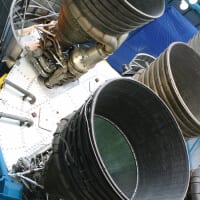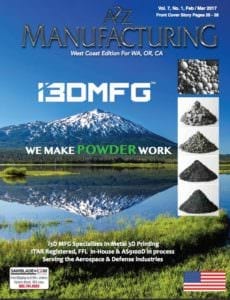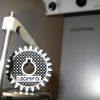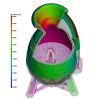Aerojet Rocketdyne is at the forefront of testing 3D printed parts for use in their rockets. Likely DMLS materials would be Titanium and/or Inconel. Last Just, Aerojet Rocketdyne made the news with their successful test firing of a small 3D printed Bantam rocket engine and now the company announced yesterday that is has gone on to put its MPS-120™ CubeSat High-Impulse Adaptable Modular Propulsion System™ (CHAMPS ™) – which included a 3D printed titanium piston – through a hot-fire test, demonstrating the system’s readiness for launch into space.
This illustrates the major progress and promise in the field of 3D metal printing (additive manufacturing). The CHAMPS project was funded by NASA to inquire about the successful development of a rocket system for carrying small spacecraft, like CubeSats, into space.
With regards to the use of 3D printing, Aerojet Rocketydne VP of Space Advanced Programs Julie Van Kleeck said,
“Aerojet Rocketdyne continues to push the envelope with both the development and application of 3-D printed technologies, and this successful test opens a new paradigm of possibilities that is not constrained by the limits of traditional manufacturing techniques.”
MPS-120 project engineer Ethan Lorimor described the motivation for 3D printing components for such rocket systems, including reduced time and the increased complexity accomplished by the manufacturing technique,
“Demonstrating the speed at which we can manufacture, assemble and test a system like this is a testament to the impact that proper infusion of additive manufacturing and focused teamwork can have on a product. The demonstration proved that the system could be manufactured quickly, with the 3D printing taking only one week and system assembly taking only two days.”
So what’s next for the 3D Printing Aerospace field? The sky’s the limit. Aerojet is looking at testing out the 3D printing of tiny satellites the size of a coffee mug that can be propelled by the world’s smallest liquid rocket engines (which could also be printed using 3D metal printing).
It’s an exciting time for the 3D metal printing industry. The use of metals such as Titanium and Inconel are proving to be invaluable especially when paired with bridge manufacturing concepts that have the ability to bring full-scale products to market faster and more efficiently than ever before.







